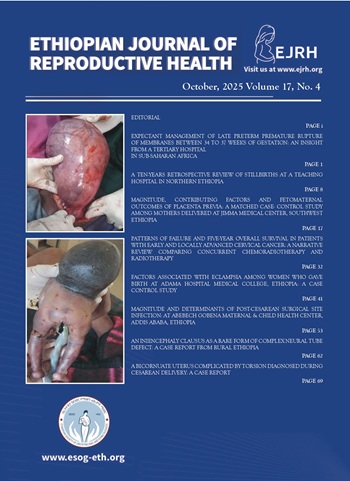A Case Report Uterine Didelphys Complicated by Torsion: Intraoperative Diagnosis During Cesarean Delivery
##plugins.themes.bootstrap3.article.main##
Abstract
Abstract
Background Congenital uterine anomalies (CUAs) arise from incomplete fusion or resorption of the Müllerian ducts during embryogenesis, resulting in structural malformations that may compromise reproductive outcomes. Among these, uterine didelphys—a complete failure of fusion—can coexist with obstetric complications such as malpresentation and preterm birth. Uterine torsion, defined as rotation of the uterus beyond 45 degrees on its longitudinal axis, is a rare and potentially life-threatening emergency, especially when occurring in anomalous uteri.
Case Presentation A23-year-old gravida II, abortion I woman who presented at 33 weeks of gestation with vaginal bleeding, abdominal pain, and hypertension. Ultrasound revealed a breech fetus with intrauterine growth restriction and posterior placenta. Emergency cesarean section was performed for placental abruption with active vaginal bleeding and breech presentation. Intraoperatively, a uterine didelphys with 180° levorotation of the gravid right uterus was identified and detorsed before delivery. A female neonate weighing 1400 grams was delivered and admitted to NICU with diagnoses including respiratory distress syndrome and early-onset neonatal sepsis. Both mother and infant recovered well, with the neonate thriving at 208 days.
Conclusion This case highlights the importance of anatomical awareness during cesarean delivery and the need for early antenatal diagnosis of Müllerian anomalies. Advanced imaging and structured antenatal protocols could reduce morbidity through timely referral and delivery planning.




